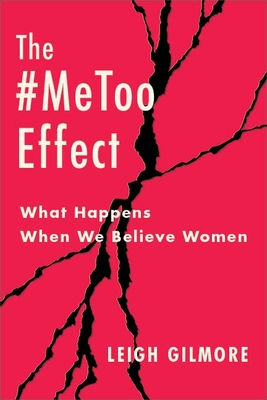The #MeToo Effect: What Happens When We Believe Women by Leigh Gilmore
- Jodie
- May 29, 2024
- 4 min read

Book Review
Title: The #MeToo Effect: What Happens When We Believe Women by Leigh Gilmore
Genre: Non-Fiction, Feminism
Rating: 3.75 Stars
The introduction to The #MeToo Effect was intriguing, and it breaks down some elements of the movement that we know and the reasons behind it. However, there are far more interesting things that the public are unaware of and there are undoubtedly some unintended consequences of such a movement, but I was excited to give it a go.
Chapter one and two looks at the He Said/She Said debate. The first chalet looks at the women’s side of the debate where thru are often demonised and blamed for their own assault when they actual have no agency in the matter. While men are often able to act with impunity especially those in the public eye although this has changed since the #MeToo movement. We are shown real life accounts rather than just being fed statistics which make everything seem more real and grounded in reality.
Chapter three looks at the silence breakers of the movement. Silence breakers doesn’t refer to specific people but rather to an idea or movement. These people are the ones who changed the public view from that of bystanders who take sides but to witnesses to the events that are being discussed. While this might seem inconsequential to many it is an important shift in how the public views these events. This shift not only affects public opinion but the justice system as these collective witnesses put pressure in the right places to enact change which is something that was brought to light with the #MeToo movement.
Chapter four looks at the anti-rape lineage throughout history. The speaking out about sexual violence is nothing new and has been going on for centuries but these stories are often pushed to the side or supressed throughout history. Some of the first women to speak out were women of colour who linked sexual violence to slavery, but this narrative isn’t well known even today. This chapter also brings in the notion that white women are witnesses and accomplices to the rape and sexual violence aimed towards women of colour to profit from the acts both socially and economically. The lineage of this fight started with women of colour has been overlooked for centuries and it is only recently that these histories are coming to light despite the women fighting for the same cause
We then investigate the Kavanaugh court session where women came forward to explain how he sexually harassed or assaulted them. However, since this wasn’t a legal case but a test of character the women were treated extremely poorly very similar to the case of Anita hill. Learning how the survivor’s testimony was dismissed and omitted in many cases was heartbreaking, but it is the reality we live in. These facts of collective witness and testimony dismissal mean that many cases of sexual assault don’t go anywhere, or the men walk away with any repercussions like with Anita hill and Brett Kavanaugh.
Looking at how society and cultures in general contribute to the silencing of survivors was difficult to read. There are even cases of women being raped in police custody which wasn’t even illegal until a specific case forced the changing of the law. These failures of listening and the silencing they enact form the connective tissue of testimonial injustice. The silencing of victims of abuse is nothing new but the methods used have changed with the times especially when the abuser sits in a position of power or privilege. This was honestly sad to read about as my own experiences with the legal system in the UK was nothing but brilliant and to think thousands of women are being silenced say after day, week after week, year after year was heartbreaking.
We then turn to how rape and sexual violence is portrayed in media especially in literature. From Shakespeare to modern authors many have documented the details of rape, assault and abuse but depending on the author and whether the story is fictional they can have different responses from the public. Some are treated as female warriors speaking out about their survival while others are blamed for their own abuse, and this is cycle that we need to break to help these women and girls heal and achieve true justice which might lose outside of the courtroom. This was one of the most interesting chapters for me and provided me with quite a few books to read from survivors that I will be picking up in the future. Moving into the final chapter I was eager to see how the book would be wrapped up and what the final message would be for readers.
The final chapter looks at consent and the issues with it, both legally and in society. The way most people view consent causes a lot of issues within legal cases involving rape or sexual violence and, in some countries, there needs to be explicit verbally withdrawal of consent leading to some victims going without justice. This raises a whole host of questions and concerns surrounding consent but changing the definition of the term and how we view it is nearly impossible since someone always benefits from the loopholes within the definition. This was the most heart-breaking fact because it shows that no matter how we define or view consent in sexual situations, there will always be someone willing to ignore consent altogether and legal persons willing to exploit the definition and its loopholes. Overall, The #MeToo Movement was an interesting and difficult book to read but points out several areas of society where we need to devote more resources and education to protect the vulnerable people within our society.
Buy it here:
Paperback/Hardcover: amazon.co.uk amazon.com
Kindle Edition: amazon.co.uk amazon.com




Comments